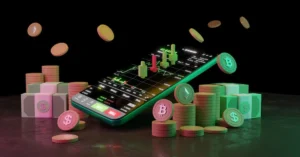Introduction to Prosecchini
Prosecchini is a term not widely recognized in modern global culture, but it holds a deep and unique place in the historical and cultural traditions of Italy. Often used in older times to denote a form of symbolic exchange, religious offering, or token, prosecchini is an Italian diminutive term that conveys something small yet meaningful—frequently in the form of coins or tokens.
To truly understand prosecchini, one must explore not only its linguistic roots but also its broader implications in societal rituals, traditional customs, and religious practices. It is a concept that carries layers of meaning far beyond its initial impression. While it may seem simple—a small coin or offering—its importance spans centuries, playing a quiet yet consistent role in many Italian communities.
This article delves deep into what prosecchini are, their historical use, symbolic interpretations, cultural associations, and the contexts in which they continue to resonate today.
Etymology and Meaning of Prosecchini
The term “prosecchini” is a diminutive of “prosecco” or similar root forms, but in the context of traditions and language, it more specifically relates to small coins or offerings. The suffix “-ini” in Italian often denotes something smaller or more affectionate, which in this case refers to tokens or coins that are minor in monetary value but substantial in emotional or cultural weight.
While not a term frequently used in everyday contemporary Italian speech, it survives in niche dialects, ecclesiastical language, and local folklore. In many cases, prosecchini were used as a way to refer to small donations or offerings, either made to a religious institution, a charitable cause, or even as part of a cultural events.
Historical Background
In the earlier centuries of Italian history—particularly from the late Middle Ages through the Renaissance—prosecchini played a role in religious and civic life. During these times, society was heavily influenced by the Church, and acts of charity and devotion were often expressed through physical tokens, such as candles, bread, or small amounts of money.
Prosecchini were often deposited in church collection boxes, donated to shrines, or handed to individuals in need. Though monetarily small, the value of a prosecchino (singular) lay in the gesture. It symbolized humility, generosity, and participation in a communal act of goodwill.
There are also historical accounts in which children were given prosecchini by parents or elders during religious festivals or community events. In this context, the gift of a prosecchino was both a reward and a teaching tool—imparting values of sharing, faith, and social responsibility.
Cultural Significance and Ritual Use
Prosecchini hold a place in various Italian traditions that are still observed today, though often transformed or reinterpreted through modern customs. They are particularly evident in the following cultural scenarios:
1. Religious Offerings
In Catholic tradition, small donations have long been an essential form of piety and penance. Prosecchini represented a humble gift to God or the saints. Many churches featured a box or bowl specifically for these coins near statues of saints or in chapels. Visitors would drop in a prosecchino, light a candle, and say a prayer. This act wasn’t just about the donation but about the devotion and spiritual communication it symbolized.
During local religious festivals (feste patronali), children and adults alike would often make offerings of prosecchini as part of procession rituals. These acts would be accompanied by prayers for health, fertility, safety, or in remembrance of a passed loved one.
2. Pilgrimage Traditions
In pilgrimage culture, particularly in Southern and Central Italy, prosecchini could also be left at sacred sites as a form of votive offering. Pilgrims who had prayed for a miracle and received divine favor would return to a shrine or holy site and leave prosecchini in gratitude. These coins were symbolic—not always of the pilgrim’s wealth, but of their faith and commitment to a promise made in prayer.
This usage of prosecchini is akin to votive tablets (ex-votos), although smaller and more modest in form. The concept behind them, however, was just as potent: fulfilling a vow.
3. Folk Traditions and Community Customs
In rural and folk traditions, prosecchini often appeared in the context of children’s rites of passage—such as first communions, confirmations, or other sacramental events. A family elder might gift a child with a prosecchino wrapped in a small cloth or pouch, usually alongside religious tokens like a cross or medallion. These symbolic gifts taught respect for tradition and encouraged the child’s participation in spiritual life.
Another folk use involved placing prosecchini under a pillow or in a child’s shoes during festivals like Epiphany or the Feast of Saint Nicholas, similar to the way coins are left under pillows by the “tooth fairy” in English-speaking cultures.
Symbolism and Deeper Meaning
While seemingly small and insignificant, the prosecchino carries rich symbolic meaning. At its heart, it is an emblem of humble generosity. It teaches that no act of giving is too small when performed with genuine intent. It symbolizes:
- Charity and generosity: Offering even a small coin speaks to the value of giving within one’s means.
- Spiritual devotion: Giving in religious contexts expresses connection to the divine.
- Gratitude and fulfillment: Prosecchini are often tokens of thanks after a prayer is answered.
- Cultural continuity: Passing on prosecchini during traditional events keeps cultural memory alive.
In many communities, these tokens have become deeply personal—items kept in memory boxes, passed from one generation to another, or retained as good luck charms or symbols of familial connection.
Modern Interpretations and Evolving Use
As modernity and globalization transform Italy’s traditional landscape, the tangible use of prosecchini has declined, but the spirit of the practice persists in various ways.
Today, prosecchini are sometimes represented by symbolic coins given out during weddings or baptisms, acting as keepsakes or party favors. These coins are often engraved or decorated with religious icons, dates, and names, transforming the traditional prosecchino into a personalized memento.
In the art and heritage sectors, prosecchini are preserved in museum collections as artifacts of communal religious practice. Some antique markets in Italy even sell historic prosecchini, especially those made of unique metals or bearing ancient inscriptions. Collectors seek them not for monetary value, but for their role in Italy’s historical and cultural narrative.
Another modern adaptation is seen in charity fundraisers. Churches and community organizations might distribute symbolic coins as a token of gratitude for donations, echoing the old prosecchini tradition while adapting it to contemporary fundraising models.
The Role of Prosecchini in Personal and Family Life
One of the most enduring uses of prosecchini is within the context of personal and family memory. Grandparents or parents may still gift children symbolic coins during moments of transition or growth—first day of school, religious milestones, birthdays—embedding these moments with layers of meaning.
Even when not monetary in nature, the gift of something small yet heartfelt (a charm, a token, a symbolic coin) channels the original spirit of the prosecchino. In this way, the tradition continues to shape Italian identity, blending the personal and communal into a tapestry of shared cultural values.
For some families, prosecchini become heirlooms—a reminder of the faith, struggles, and hopes of previous generations. They are physical traces of ancestors who lived humbly but generously, who believed in the value of intention over appearance.
Prosecchini and Comparative Cultural Traditions
The concept of prosecchini is not isolated to Italy. Many cultures around the world have similar practices involving small coins or tokens:
- In Greece, the tradition of giving coins to newborns or newlyweds is deeply entrenched.
- In Mexico, coins play a role in the “arras” ritual during weddings.
- In Japan, the tradition of giving “goshugi” envelopes with money serves a similar function of symbolic gifting.
However, prosecchini stands out in its rootedness in community rituals, especially as tied to Catholic devotion and folk heritage. Its persistence reflects the resilience of Italian cultural practices that balance faith, tradition, and family across generations.
Conclusion: Why Prosecchini Still Matter
In a world dominated by fast exchanges, digital payments, and mass consumption, the idea of a prosecchino—a small, symbolic act of generosity—feels refreshingly grounded. It invites reflection on what we value, what we give, and how even the simplest gestures can carry immense weight when done with sincerity.
Prosecchini remind us that value is not always monetary. Whether used in religious devotion, cultural customs, or family traditions, these small tokens represent connection—between people, between generations, between the earthly and the divine.
While the physical prosecchino may no longer circulate as widely as before, the principles it stands for continue to influence Italian life. Acts of modest charity, family-centered celebrations, and the quiet honoring of spiritual commitments all echo the tradition of the prosecchini. In this way, the small coin continues to shine—not in currency, but in culture.
ALSO READ: Newznav.com 8888996650: A Comprehensive Look at the Modern News Platform
Frequently Asked Questions (FAQs)
1. What exactly is a prosecchino?
A prosecchino is a small symbolic coin or token, often used in Italian religious and cultural traditions as a form of offering, gift, or memento. Though usually of low monetary value, it holds significant symbolic meaning.
2. Are prosecchini still used today?
Yes, although not as commonly in their original form. Today, they appear in modern adaptations such as religious keepsakes, baptismal gifts, wedding favors, or charity tokens. Their symbolic role remains meaningful in many Italian communities.
3. What is the origin of the term prosecchini?
The term “prosecchini” is a diminutive in Italian, derived from roots indicating something small or symbolic, likely related to small offerings or coins. It reflects the practice of humble giving and devotion in Italian culture.
4. How were prosecchini used in religious traditions?
Prosecchini were often donated in churches or shrines as offerings during prayers or festivals. They symbolized acts of faith, gratitude, or penance and were typically placed in collection boxes or near saints’ altars.
5. Can prosecchini be considered lucky charms?
In some contexts, yes. Families have kept prosecchini as heirlooms or good luck tokens, especially when tied to a religious or spiritual event. They often serve as personal keepsakes with emotional and cultural significance.









